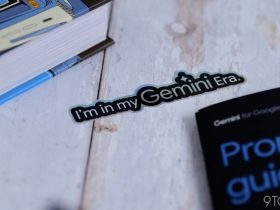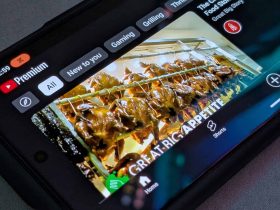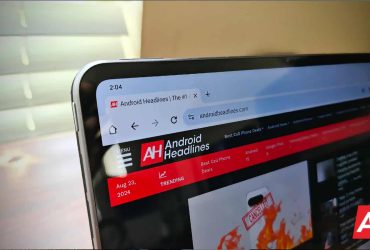Motorola Razr Ultra Just Crushed The Galaxy Z Flip 6 — Here’s Why It’s The New Flip King

Contents
Motorola has just announced the new Razr 2025 series. This year, Motorola is going big, with three Razr models. New this year is the Razr Ultra, in addition to the Razr Plus and Razr. Motorola has also made some big changes when it comes to the specs.
For the past couple of years, Motorola has used an older Snapdragon 8-series chipset in the “Plus” model. Technically, last year, they used a current chipset, but it was slower because it was the Snapdragon 8s Gen 3. This year, Motorola is using the Snapdragon 8 Elite in the Plus and Ultra, with the regular Razr getting a MediaTek Dimensity 7400X.
Why three models? Well, essentially, Motorola is looking to cement its position in the flip phone category. They currently have a huge majority of the flip phone market. Which is not hard to believe, particularly in North America, since the only other option is the Galaxy Z Flip series. Motorola also mentioned that over 25% of Razr buyers are coming from iOS. That’s pretty telling, essentially telling us that the iPhone is so boring they want a flip phone.
The World’s Most Powerful Flip phone
Motorola is claiming that the Razr Ultra is the world’s most powerful flip phone, and it’s actually more powerful than some flagship phones. Why? Because Motorola is using the Snapdragon 8 Elite, combined with 16GB of RAM and 512GB of storage. And there’s an option for 1TB of storage, which will only be available from Motorola. That’s more RAM and storage than the Galaxy S25 Ultra starts with.
Network
| Types | GSM / HSPA / LTE / 5G |
Display
| Type | 1224p Super HD, 165Hz LTPO, 4,500nits |
| Size | 7-inch |
| Resolution | 2992 × 1224 |
| Protection | Corning Gorilla Glass-Ceramics |
| Cover Display | 4-inch 165Hz LTPO, 3000nits |
Body
| Dimensions | Open: 73.99 x 171.48 x 7.19mm; Closed: 73.99 x 88.12 x 15.69mm |
| Weight | 199g |
| Build | Aluminum frame, various back materials |
| SIM | Nano-SIM and eSIM |
| Protection | IP48 certified |
Platform
| OS | Android 15 |
| SoC | Qualcomm Snapdragon 8 Elite |
| GPU | Adreno 830 |
Memory
| RAM | 16GB RAM (LPDDR5X) |
| Storage | 512GB/1TB UFS 4.0 |
Cameras
| Main | 50MP f/1.8 1.0μm, Instant All-Pixel PDAF, OIS, Pantone-Validated Color and Skin Tones |
| Ultrawide | 50MP f/2.0 122° FOV 0.6μm |
| Telephoto | N/A |
| Selfie | 50MP f/2.0 0.64μm |
| Video Capture | 8K (30fps), 4k UHD (60fps/30fps), FHD (60fps/30fps); Slow motion: 4K UHD (120fps), FHD (240fps/120fps) |
| Camera Features | Action Shot, Group Shot, Signature Style, Long Exposure, Super Zoom, Ultra HDR, Auto Night Vision, Auto Smile Capture, Pantone ValidatedTM Color, Pantone SkintoneTM Validated, Scan (Powered by Adobe Scan), Photo Booth, Portrait Mode, Night Vision, Macro, Pro Mode, Face Retouch, Gesture Selfie, Live Filters, HDR, Panorama, Tilt-Shift, External Display, Preview, Instant Review, and Camera Cartoon |
| Video Features | Dolby Vision, Camcorder Mode, Dual Capture, Horizon Lock, Hyperlapse Stabilization, Live Filters, Slow-Motion, Auto Focus Tracking, Timelapse, Video HDR, Audio Zoom, Advanced Stabilization, and Face Retouch |
Sound
| Speaker(s) | Dual Stereo speakers with Dolby Atmos |
| Audio jack | No |
Battery
| Capacity | 4,700mAh |
| Charging | 68W wired, 30W wireless, 5W reverse wireless |
| Charger | Not included |
Network Bands
| 3G | GSM850/900/1800/1900; W1/2/4/5/8 |
| 4G | B1/2/3/4/5/7/8/12/13/14/17/18/19/20/2 5/26/28/29/30/32/34/38/39/40/41/4 2/43/48/66/71 |
| 5G sub-6 | N1/2/3/5/7/8/12/14/20/25/26/28/29/3 0/38/40/41/48/66/70/71/75/77/78 |
Connectivity
| Sensors | Fingerprint reader, Approach IR sensor, Proximity sensor, Ambient light sensor, Accelerometer, Gyroscope, eCompass, Hall sensor, Barometer |
| Location Services | GPS, Glonass, Galileo, QZSS, Beidou |
The Razr Ultra is also the strongest Razr ever. This is thanks to the stainless steel frame and titanium reinforced hinge, which is now up to 4x stronger than before. While Motorola didn’t spend a lot of time on it, they were able to almost entirely get rid of the crease. We saw this first-hand in our hands-on time following the event. The crease is pretty hard to see or feel, almost as much as the OPPO Find N5’s crease.
This is also the first phone to come with Corning Gorilla Glass-Ceramics. This is a new innovative cover material that is designed to provide advanced toughness and durability for mobile devices. This is a transparent, strengthenable glass-ceramic material that makes the Razr Ultra much better at drops, particularly on rough surfaces.
Motorola will retail the Razr Ultra for $1,299. Pricing could vary by retailer, however. Pre-orders will start on May 7 at Amazon, Best Buy, and Motorola.com. It’s going on sale at AT&T and T-Mobile on May 15.
Motorola’s Razr Plus 2025 offers a good middle-ground option
The Razr Plus is pretty similar to last year’s model. It still sports that huge 4-inch cover display and a 6.9-inch inner display, so it is slightly smaller than the Razr Ultra. However, surprisingly, it does sport the Snapdragon 8s Gen 3 (the same as last year’s Razr Plus), but with slightly less RAM at 12GB, with 256GB of storage on the base model. For some reason, the Razr Plus still has the smallest battery, we’re not really sure why, when even the base model has a larger capacity battery. Here’s the full specs.
Motorola will start pre-orders for the Razr Plus on May 7, at Best Buy, Amazon and Motorola.com. It will be available for sale on May 15 at AT&T and T-Mobile, with a retail price of $999.
Network
| Types | GSM / HSPA / LTE / 5G |
Display
| Type | FHD+, 165Hz LTPO, 22:9 aspect ratio, 3,000nits |
| Size | 6.9-inch |
| Resolution | 2640 x 1080 |
| Protection | Corning Gorilla Glass Victus |
| Cover Display | 3.6-inch 165Hz LTPO, 2400nits |
Body
| Dimensions | Open: 73.99 x 171.42 x 7.09mm Closed: 73.99 x 88.09 x 15.32mm |
| Weight | 189g |
| Build | Leather-Inspired/Velvet-Inspired finish on rear 6000 series high strength aluminum (frame) Titanium-Reinforced Hinge |
| SIM | Nano-SIM and eSIM |
| Protection | IP48 certified |
Platform
| OS | Android 15 |
| SoC | Qualcomm Snapdragon 8s Gen 3 |
| GPU | Adreno 735 |
Memory
| RAM | 12GB RAM (LPDDR5X) |
| Storage | 256GB UFS 4.0 |
Cameras
| Main | 50MP f/1.7 0.8μm, Instant All-Pixel Focus, OIS |
| Ultrawide | N/A |
| Telephoto | 50MP f/2.0 0.64um, 2x optical zoom |
| Selfie | 32MP f/2.4 0.7 μm |
| Video Capture | 4K UHD (60/30fps), FHD (60/30fps); Slow motion: FHD (960/240/120fps) |
| Camera Features | Action Shot, Group Shot, Signature Style, Long Exposure, Super Zoom, Ultra HDR, Auto Night Vision, Auto Smile Capture, Scan (Powered by Adobe Scan), Photo Booth, Portrait Mode, Night Vision, Pro Mode, Face Retouch, Gesture Selfie, Live Filters, HDR, Panorama, Tilt-Shift, External Display Preview, Instant Review, Camera Cartoon |
| Video Features | Adaptive Stabilization, Camcorder Mode, HDR10+ Recording, Dual Capture, Portrait Mode, Hyperlapse Stabilization, Live Filters, Night Vision, Slow-Motion, Auto Focus Tracking, Timelapse, Video HDR, Audio Zoom, Face Retouch |
Sound
| Speaker(s) | Dual Stereo speakers with Dolby Atmos featuring Spatial Sound, and Qualcomm Snapdragon Sound |
| Audio jack | No |
Battery
| Capacity | 4,000mAh |
| Charging | 45W wired, 15W wireless, 5W reverse wireless |
| Charger | Not included |
Network Bands
| 3G | GSM 850/900/1800/1900; W1/2/4/5/8 |
| 4G | B1/2/3/4/5//7/8/12/13/14/17/18/19/20/25/26/28/2 9/30/38/39/40/41/48/66/71 |
| 5G Sub-6 | N1/2/3/5/7/12/14/20/25/26/28/29/30/38/40/41/ 48/66/70/71/77/78 |
Connectivity
| Sensors | Fingerprint reader, Proximity + light sensor, Ambient light sensor, Accelerometer, Gyroscope, eCompass, Hall sensor, Barometer |
| Location | GPS, A-GPS, LTEPP, SUPL, GLONASS, Galileo |
Motorola’s entry-level Razr is going to be a top-seller
Then there’s the regular Razr. It’s also very similar to last year’s model, still sporting the same 3.6-inch cover display and 6.9-inch inner display. It also sports the MediaTek Dimensity 7400X, so there is definitely a performance decrease with this model.
The Motorola Razr will be the most widely available Razr foldable this year. With pre-orders starting at Best Buy, Amazon, and Motorola on May 7. It will later be on sale starting May 15 at T-Mobile, Metro by T-Mobile, Cricket Wireless, Verizon, Visible, Total Wireless, Straight Talk, Xfinity mobile, Consumer Cellular, Google Fi Wireless, US Cellular, Cox Mobile, Optimum Mobile and Spectrum, with Boost Mobile to follow in “the coming months”.
The Razr will retail for $699.
Network
| Types | GSM / HSPA / LTE / 5G |
Display
| Type | 1224p Super HD, 120Hz LTPO, 3,000nits |
| Size | 6.9-inch |
| Resolution | 2992 × 1224 |
| Protection | Corning Gorilla Glass-Ceramics |
| Cover Display | 3.6-inch 90Hz LTPO, 1700nits |
Body
| Dimensions | Open: 73.99 x 171.30 x 7.25mm Closed: 73.99 x 88.08 x 15.85mm |
| Weight | 188g |
| Build | Aluminum frame, various back materials |
| SIM | Nano-SIM and eSIM |
| Protection | IP48 certified |
Platform
| OS | Android 15 |
| SoC | Qualcomm Snapdragon 8 Elite |
| GPU | Adreno 830 |
Memory
| RAM | 8GB RAM (LPDDR4X) |
| Storage | 256GB UFS 2.2 |
Cameras
| Main | 50MP f/1.7 0.6μm, Instant All-Pixel PDAF, OIS, Pantone-Validated Color and Skin Tones |
| Ultrawide | 13MP f/2.2 120° FOV 1.12μm |
| Telephoto | N/A |
| Selfie | 32MP f/2.4 0.7μm |
| Video Capture | 4k UHD (30fps), FHD (60fps/30fps); Slow motion: FHD (120fps), HD (240fps) |
| Camera Features | Ultra HDR, Auto Night Vision, Auto Smile Capture, Signature Style, Photo Booth, Portrait Mode, Night Vision, Macro, Pro Mode, Face Retouch, Dual Capture, Gesture Selfie, Live Filters, Panorama, Tilt-Shift, Ultra Resolution, Scan, External, Display Preview, Instant Review, Camera Cartoon, and Mirror Mode |
| Video Features | Adaptive Stabilization, Camcorder Mode, Dual, Capture, Horizon Lock, Hyperlapse, Stabilization, Live Filters, Slow-Motion, Timelapse, Video HDR, Audio Zoom, Face, Retouch |
Sound
| Speaker(s) | Dual Stereo speakers with Dolby Atmos |
| Audio jack | No |
Battery
| Capacity | 4,500mAh |
| Charging | 30W wired, 15W wireless |
| Charger | Not included |
Network bands
| 2G | GSM850/900/1800/1900 |
| 3G | W1/2/4/5/8 |
| 4G | B1/2/3/4/5//7/8/12/13/14/17/18/19/20/25/26/28/29/ 30/38/39/40/41/48/66/71 |
| 5G Sub-6 | N1/2/3/5/7/12/14/20/25/26/28/29/30/38/40/41/48 /66/70/71/77/78 |
Connectivity
| Sensors | Fingerprint reader, Approach IR sensor, Proximity sensor, Ambient light sensor, Accelerometer, Gyroscope, eCompass, Hall sensor, and Barometer (NA only) |
| Location Services | GPS, A-GPS, Glonass, Galileo |
Of course, there’s more AI
Ahead of today’s announcement, we had heard that Motorola was a smartphone OEM that Perplexity had struck a deal with, making it an included assistant. And that was confirmed today by Motorola. But it’s more than just allowing the user to choose the default assistant between Perplexity and Gemini (or Google Assistant). Instead, Motorola is using its own AI, Moto AI, to direct you to the right AI agent to get your task done. So if you’re looking to do something that Perplexity would do better than Gemini, then that’s where Moto AI will send you.
Motorola is showing off a bunch of new AI features as well, this time around. And the theme that I get out of this is, Motorola wants to make AI that actually works and is helpful. Not AI that is just there to be there, like some other features we’ve seen on other phones.
A feature that really drives this theme home is “Catch me up”. Think about it, after you’ve come out of a meeting, you have hundreds of notifications. With just a tap, you can have these notifications summarized for you, and you can reply to messages in-line. Making it so much easier to get back to everyone.
Motorola is also using the “Pay Attention” feature, which I think is genius. As someone that uses the Google Recorder almost religiously, this feature is really useful. Just press the AI button, and tap on “Pay Attention” and your Razr will start recording the audio. Now, if you’re in a meeting and can’t remember what was said, Razr does.
Motorola isn’t just working with Perplexity either. It is also working with Meta, Microsoft CoPilot, and, of course, Google Gemini. So there are all sorts of AI agents available for you to get the most out of your phone. A feature that Meta showed off with the Motorola Razr is Smart Connect. While the Quest 3 lets you work from the headset, with as many monitors as you want, now with Smart Connect, you can mirror your phone onto Quest 3.
The company is showing that you shouldn’t bet on just one AI platform, and instead, Motorola is working with multiple platforms to give you, the user, the best experience possible.

What’s your reaction?
Love0
Sad0
Happy0
Sleepy0
Angry0
Dead0
Wink0










Leave a Reply
View Comments